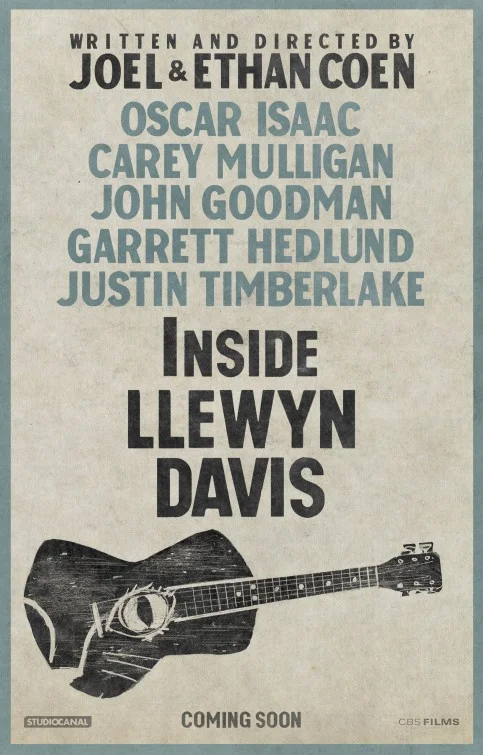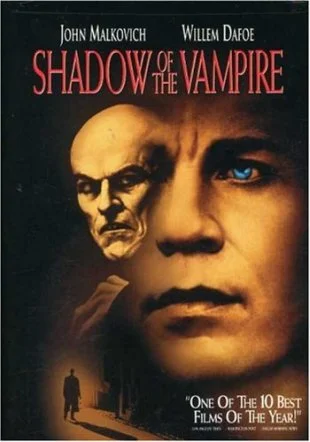Nosferatu: Phantom Der Nacht
Nosferatu: Phantom Der Nacht (1979), written and directed by Werner Herzog, closes out this mini-vampire trilogy (which included the 1920s Nosferatu and Shadow of the Vampire). Herzog took on this project as a tribute to German cinema and an homage to Murnau and the German Expressionism movement of filmmaking. He essentially filmed the script twice, in English and in his native German, but this review solely considers the German version. While the film pulls much inspiration from the original source, it also draws out some significant differences, imbuing the text with more explicit imagery and themes, specifically around religion and sexuality.
The story almost follows the 1922 film beat for beat with a few major exceptions, including a more intense focus on the wife and also a twist on the ending. The tale follows real estate man Jonathan Harker (Bruno Ganz) selling property to the mysterious Count Dracula (Klaus Kinski), who lives in a remote mysterious castle in the Transylvanian wilderness and has a curious predilection for blood. As Dracula travels to the city to claim his new property, death and plague follow him, plunging the city’s residents into resigned acceptance of their impending demise. The real estate’s wife, Lucy (Isabelle Adjani), ultimately sacrifices herself to ensure the Count’s destruction, distracting him long enough for daylight to meet his pale flesh. Tragically, her heroic act is done in vain, as her husband ultimately transforms into a vampire, succumbing to the effects of Count Dracula’s numerous feastings and escaping the town to enact further treacherous deeds.
The film is truly a love letter to classic German cinema, and in particular F.W. Murnau’s visionary composition of the 1922 Nosferatu. Herzog, as a German filmmaker, must have felt compelled to celebrate this singular work from the nation’s illustrious past of German Expressionism and his tribute shines through not only in the script mirroring the plot, but also designing several shots that echo iconic sequences from the silent film. For example, he takes inspiration from the famous shot of the menacing hands in shadow creeping towards the vampire’s victim. Herzog elevates the technical and artistic craft, following the shadow hands as he zeros in on Lucy. Herzog departs from his beloved source material only to give more time to character development, specifically focusing more on the wife’s reaction to her husband’s illness, taking in the destruction and madness in her town, and her seduction of the Count. The most eerie shift comes at the film’s conclusion. In the 1922 version, the wife saves the day and the vampire’s threat is laid to rest, but Herzog’s story concludes on an ominous note, with a transformed Harker dressed in Dracula’s garb and riding off into the countryside, musing that he has much to do. The 1970s version overall has a much darker tone, but still pulls many of its most dark elements from the 1920s source material.
Another tribute to the classic silent film is designing Kinski’s Dracula as a direct homage to Max Schreck’s Count Orlok, but Kinski and Herzog take the characterization to a deeper darker depth. Kinski utterly embodies the lust that Dracula feels toward human blood. When the real estate man accidentally cuts his finger while dining as Dracula’s guest, Kinski fixates on the spot of blood, lunging towards the man’s flesh for a taste, sucking the blood as an uncontrollable urge overtakes him. This shot, from the blocking to the framing to Kinski’s incredible acting portrays a tremendous violation of the man’s personal space and spirit. This scene highlights Dracula’s greatest flaw - that he has a lustful appetite for blood. As the film’s villain, his actions are ruled by his primal desire; he is impulsive rather than calculating and that weakness ultimately leads to his downfall.
Lucy, the real estate man’s wife, takes on the fight with the living dead, whose presence in the town has ravaged both her husband and the other inhabitants. In contrast to the 1920s story, Lucy’s plan to fight Dracula is much more intentional. She clearly walks into the final confrontation aware of what she needs to do and steeled to sacrificing her blood and body to save the town and her husband. The scene is a portrait of a sexual violation of Lucy’s body. Dracula tugs her dress up and goes in for her neck, penetrating her skin for the precious blood. Her body jerks about in a simulation of sex as he drinks in his fill. As the life-threatening sunlight begins to creep into the room, he pulls away, but she silently draws him back in, with the caress of a faux lover. Lucy uses Dracula’s impulsiveness and his predator’s thirst for blood to bring about his doom, sacrificing her body for the sake of the town.
Although religion has always been an integral part of vampire lore, Herzog takes a more complicated approach to the impact of spirituality in the combat against the undead. A glorious conception of God doesn’t play a large role in the narrative; rather, Lucy opines that “God is far away” and she refuses to send God the same love that she gives to her husband. She does, however, put her belief in the power of love and truly believes that will heal her ailing husband. Van Helsing, the local doctor, declares he believes in science over faith. In response, Lucy declares that “Faith is the faculty in men that allows us to believe that which we know to be untrue.” She applies this logic to understanding the vampire, but not to an application of faith towards God. Lucy doesn’t refute God’s existence, just his intentional intervention in their lives to dispel the evil that has invaded the town. The scene of Lucy walking through the city square as the men carry the coffins stiffens her resolve to act; she is angry and sad that her husband is beyond reach, her brethren are dying, and the rest of the town has gone mad in their resigned despair. Her strength to move towards sacrifice comes from within her own spirit and love for her lost husband, not from a divine inspiration or a belief that God is guiding her actions. Rather than emulating a virgin sacrifice, this is the story of a woman taking control and intentionally acting to end the madness she sees all around her.
For the most part, the film holds up well in the filmmaking fundamentals. The production design’s portrayal of the historical (yet fantastical) time piece is solid. For example, Count Dracula’s house is an alluring location, with stonework and arches that are reminiscent of the original film’s house, and an ornate decor that belies the empty and cold atmosphere. The character design for Dracula is expertly executed, as is the makeup that shows the sailor and Harker becoming progressively sicker. The musical score was a bit repetitive and seemed to just lay over the shots, rather than working to enhance the imagery. For example, sustained notes were placed over a shot that lingers on the clouds as they turn from day to night, but the music’s texture was flat compared to the dynamic changes that were transpiring on the screen. Overall, the film’s cinematography has a distinctly ethereal quality to it, which matches the slow dread that lurks throughout the film, but the handheld camera work during Harker’s journey is incredibly jarring and seems improvised, which makes the sequence stick out as unpolished amongst other well framed shots. A last nitpick - the real estate boss’ spoken lines and incessant laugh is poorly dubbed, without an even basic effort to make the sound match the visuals.
A highlight is the filming of the landscapes around Germany. In general, Herzog doesn’t feel rushed in his pacing, and this especially shines through in the sequences that feature his characters traveling through the country, observing the space that the person or creature inhabits, pausing on an interesting structure or a particularly beautiful aspect of nature. His best framed tracking shot of the film follows a carriage as it moves on a country road just beside a lake, with the reflection of the coach mirroring the movement just below.
Overall, Nosferatu can be appreciated in its tribute to German cinema of the past, for infusing the story with a strong woman who takes action to fight the villain, and the character design and performance of Dracula. However, when stacked up again the original film, the 1922 source material is superior in terms of its technical achievement, stylistic brashness, and overall creepiness. Sometimes, you just can’t beat the film that did it first.









